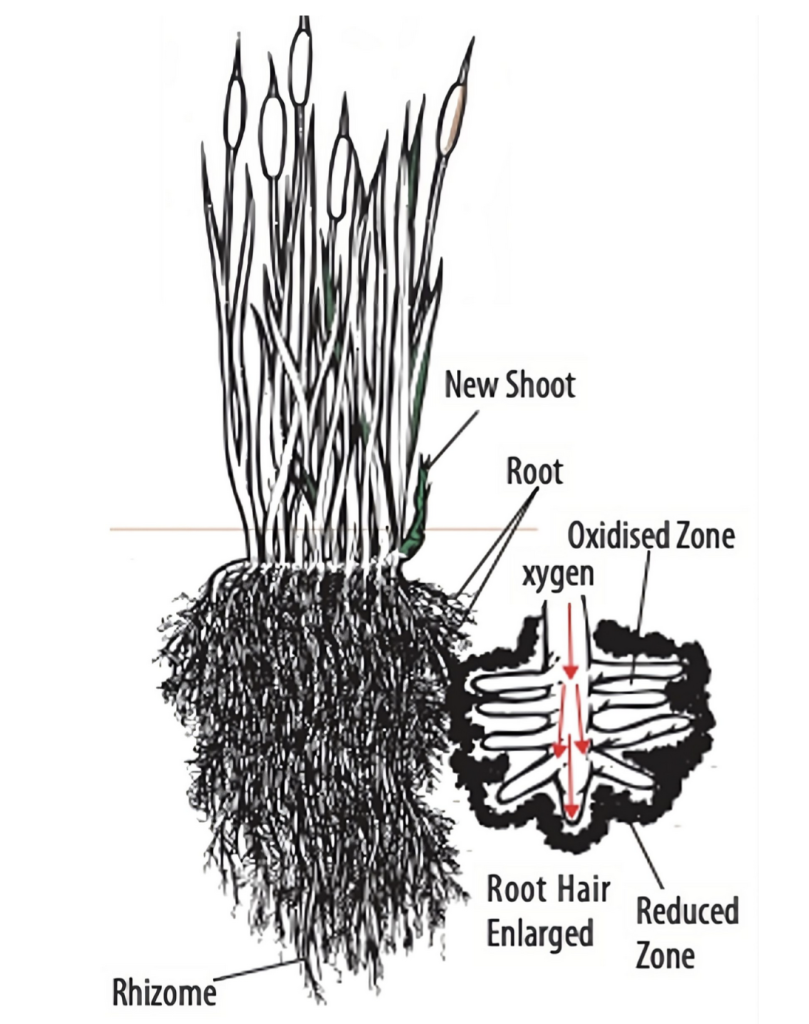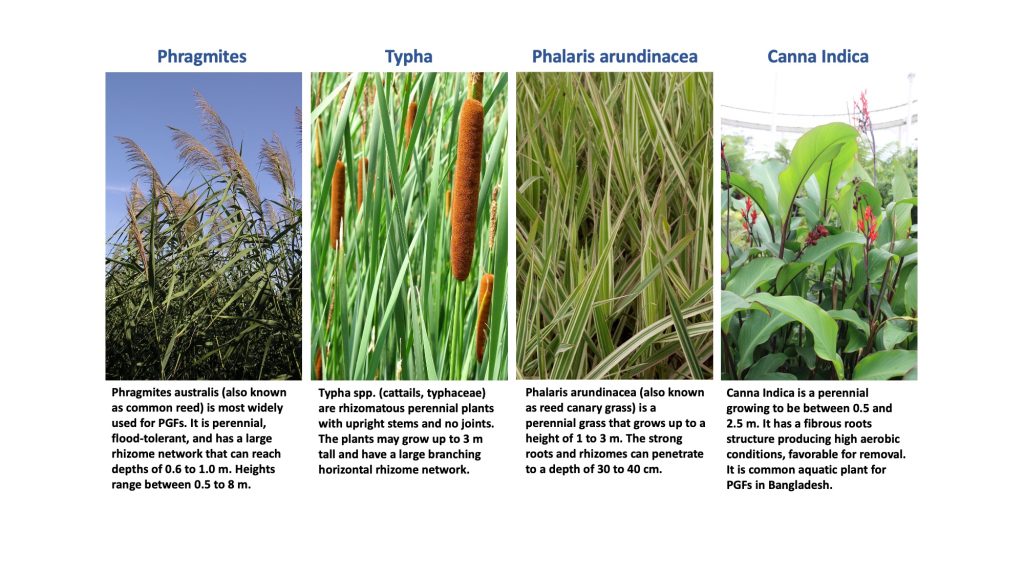2.3 What aquatic plants can be used in a planted gravel filter?

An essential aspect of PGF is the aquatic plants, also called macrophytes. The plants are selected based on high biomass production, extensive root system, short growth cycle, high tolerance capacity toward climatic and seasonal changes, and the ability to withstand large organic and nutritional loadings. The massive fibrous root system and strong rhizomes are important to supply substrate for associated bacteria and oxygenation of regions close to roots and rhizomes.
It is recommended to use indigenous plants. The PGF can be planted with clumps or sections of rhizomes dug from existing natural wetlands. Alternatively, seeds or established plantlets can be planted. It is required that plantings develop well before effluent is introduced at full capacity. During the first growing season, little effluent is better for the plants to receive adequate oxygen at their roots and develop rooting. A wet but not flooded substrate allows growth to generate a stem with leaves.
Some of the most common types of plant species used in a PGF are presented in the following schemata.

For further information, please click on the Materials tab at the top of the page.
Further Reading:
- Technical Report on Wetland Plants Available in Bangladesh (Link)
